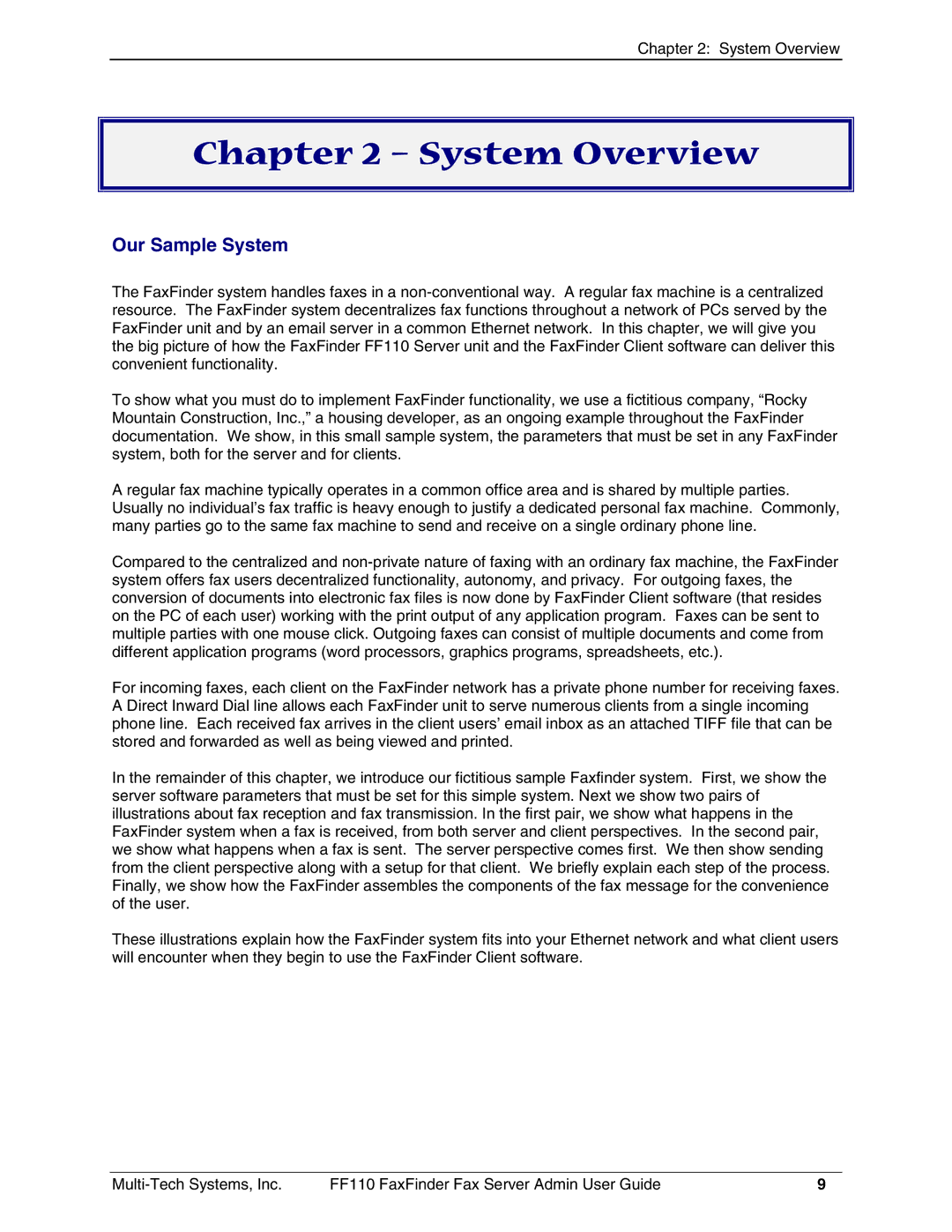
Chapter 2: System Overview
Chapter 2 – System Overview
Our Sample System
The FaxFinder system handles faxes in a
To show what you must do to implement FaxFinder functionality, we use a fictitious company, “Rocky Mountain Construction, Inc.,” a housing developer, as an ongoing example throughout the FaxFinder documentation. We show, in this small sample system, the parameters that must be set in any FaxFinder system, both for the server and for clients.
A regular fax machine typically operates in a common office area and is shared by multiple parties. Usually no individual’s fax traffic is heavy enough to justify a dedicated personal fax machine. Commonly, many parties go to the same fax machine to send and receive on a single ordinary phone line.
Compared to the centralized and
For incoming faxes, each client on the FaxFinder network has a private phone number for receiving faxes. A Direct Inward Dial line allows each FaxFinder unit to serve numerous clients from a single incoming phone line. Each received fax arrives in the client users’ email inbox as an attached TIFF file that can be stored and forwarded as well as being viewed and printed.
In the remainder of this chapter, we introduce our fictitious sample Faxfinder system. First, we show the server software parameters that must be set for this simple system. Next we show two pairs of illustrations about fax reception and fax transmission. In the first pair, we show what happens in the FaxFinder system when a fax is received, from both server and client perspectives. In the second pair, we show what happens when a fax is sent. The server perspective comes first. We then show sending from the client perspective along with a setup for that client. We briefly explain each step of the process. Finally, we show how the FaxFinder assembles the components of the fax message for the convenience of the user.
These illustrations explain how the FaxFinder system fits into your Ethernet network and what client users will encounter when they begin to use the FaxFinder Client software.
FF110 FaxFinder Fax Server Admin User Guide | 9 |
